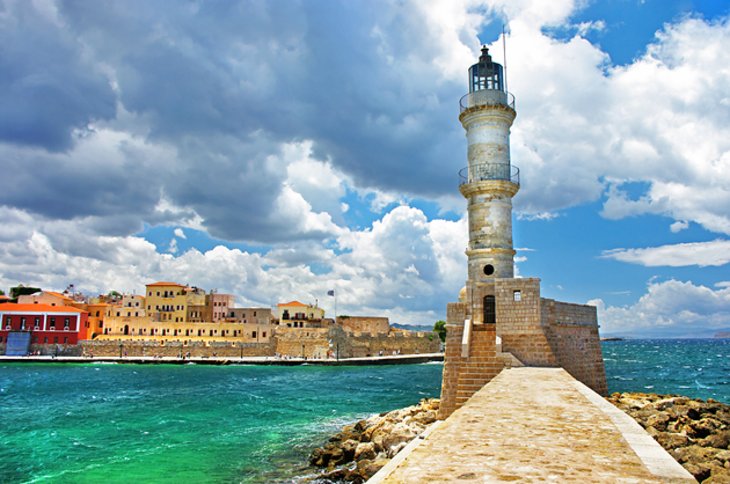Old harbor

Chania’s historic importance stemmed from its location as a port, and still today, the deep, curving harbor, which gained its present appearance under the Venetians in the 14th century, is its main tourist attraction. Filled with wooden fishing boats and ringed by a promenade lined with seafood eateries and cafés, it buzzes with visitors in summer, and is totally enchanting by night. To the east of the old harbor, note the mosque, erected by the Ottoman Turks after they took Chania in 1645. Beyond the mosque, stand the arsenals, where the Venetians repaired their galleys, and a yachting marina. This entire stretch of coast is protected by a breakwater, and on its tip stands a lighthouse – it was designed by an Egyptian architect in 1839 and is strangely reminiscent of a minaret.


